5 Pilates Exercises To Ease And Prevent Back Pain

Nagging back pain can come at any age, and all too many of us are familiar with it. According to the American Chiropractic Association, half of all working Americans report feeling back pain every year, and as a nation, we spend at least $50 billion annually to find relief. Ouch.
The good thing is, most back pain isn't caused by a serious medical condition, but rather everyday habits like poor posture, exercise, or simply sitting too much. (This is the one most essential move you can do to counter sitting all day.) By strengthening the core and releasing tension and tightness around the upper and lower back, you can usually ease the pain—and even prevent it.
The Pilates exercises below will connect you to your deep core muscles so they can support your back and remove strain there. To really feel a difference, do this routine twice a week consistently. Do note that it's best to consult a doctor and get to the root of your back pain before starting a program like this on your own. Remember to go slowly and gently, and always listen to your body—you should never do anything that hurts! (Work your core even more with the fun, fat-blasting workout routines in Prevention's new Flat Belly Barre!)
Pelvic Bridge
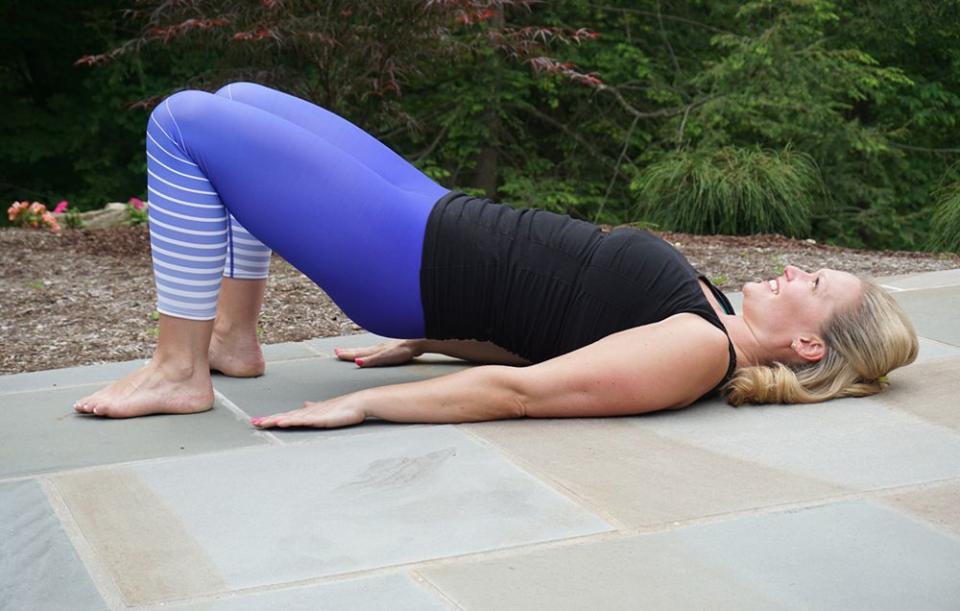
This exercise strengthens the low back, as well as the quads, glutes, hamstrings, and abs. It's essential that you engage your abs in this position to avoid sagging into the low back and straining it. (Here are 5 signs your back pain may signal a more serious problem.)
Lie on your back with knees bent and feet positioned about a hand's distance from your butt. Keep your arms long at your sides with palms flat on the floor.
Press through the entire area of your feet, squeeze your backside, and lift your hips off the floor until your shoulders, hips, and knees are in a straight line. Relax your upper body and make sure you don't roll into your neck. Hold in this position for a slow count of 10.
Inhale as you slowly lower your body back to start position, remembering to keep your core engaged. Perform 2 or 3 sets of 10-12 repetitions.
PREVENTION PREMIUM: 5 Foam Rolling Moves That Can Ease Your Aches And Pains—Physically And Emotionally
Swimming
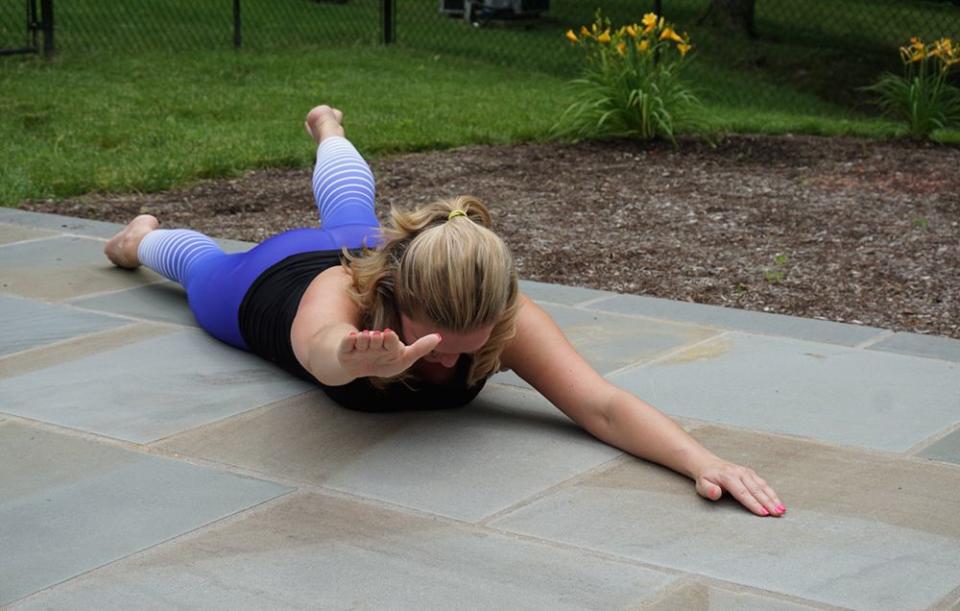
This exercise strengthens the muscles in your back. For it to be effective, you must keep a long spine and engage your abs for support throughout the movement.
Lie on your stomach with legs joined together in a straight line. Keeping your shoulder blades settled back and away from your ears, stretch your arms straight ahead and pull your abs in.
Extend and raise your arms and legs out and up off the floor and lengthen your spine so that your head must come off the mat to stay in line with it. Keep your gaze down at the mat to avoid crunching your neck, and protect your lower back by anchoring your pubic bone to the floor.
Alternate lifting right arm and left leg, then left arm and right leg, pumping them up and down in small pulses as fast as you can in a swimming motion. Focus on the length, not height, of your limbs. Continue for 30-60 seconds. Repeat 2 or 3 more times.
MORE: 8 Amazing Ab Exercises You Haven't Tried
Half Chest Curl
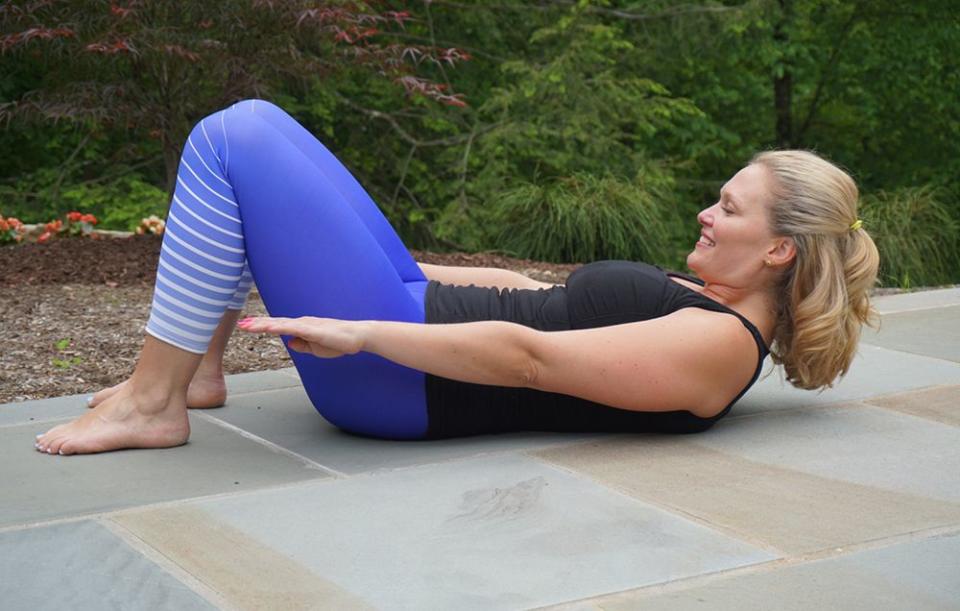
Rather than do full sit-ups, which can aggravate your low back if you're experiencing pain there, strengthen your abs in this half chest curl that also works your back muscles. (Also try adding these 5 simple moves that prevent back and neck pain into your daily routine.)
Lie with knees bent and feet flat on the floor. Cross arms over your chest or put hands behind your neck for support. Proper form prevents excessive stress on your low back, so make sure your feet, tailbone, and lower back remain in contact with the mat as you continue through this move.
Tighten your abs and peel your shoulders off the floor, breathing out as you raise your shoulders even higher. Try to work from your core, and don't lead with your elbows or pull on your neck. Hold here for a second, and then slowly lower back down. Repeat 8-10 times.
Forearm Plank
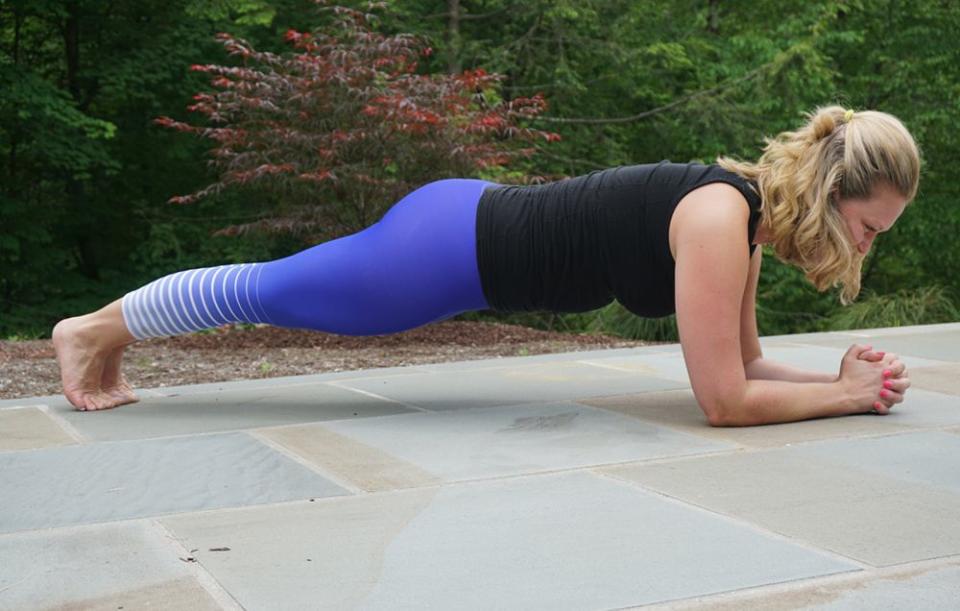
If you only have time for one pose, this is the ultimate core move. It really works the entire midsection, including the deep core muscles and the back, as well as the waist, hips, legs, buttocks, arms, and shoulders.
Lie on your mat and place your elbows directly under your shoulders. Tuck under your toes and press firmly through the backs of your legs and heels.
Engage your lower abs and tighten your core as you lift your body up off the floor and come into a straight line from head to toe. Don't let your ribs splay open or your butt sag or lift too high. (These are the 4 most common plank mistakes—and how to fix them.) Hold for 30-60 seconds, then lower down. Repeat 2 or 3 more times.
Here's how to do the perfect plank:
Child’s Pose
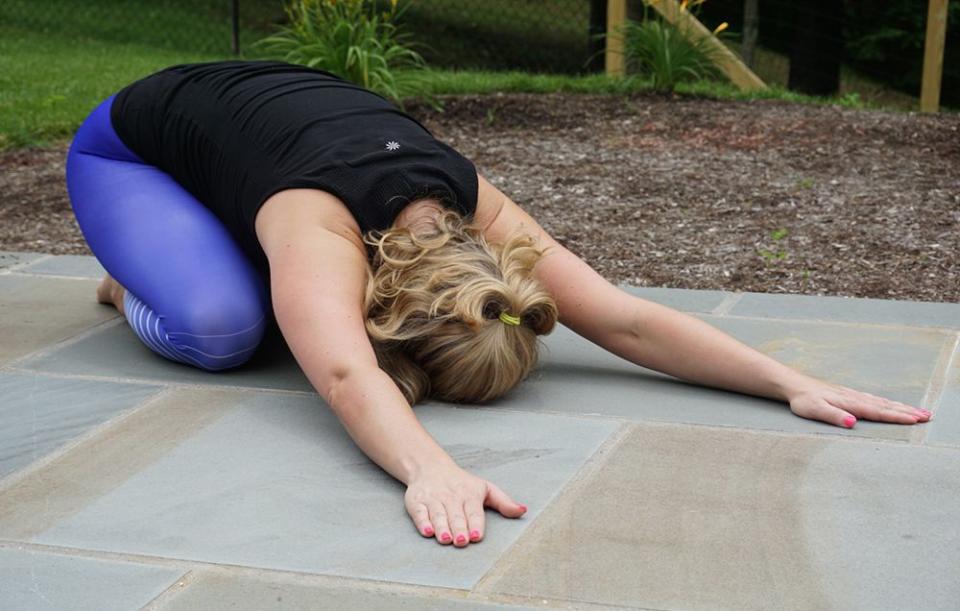
This restful stretch is a nice way to end a low back series because it helps align the spine and release tension in the low back. (If you enjoy gentle yoga poses like this one, try these 7 yoga poses you can do even if you're suffering from back pain.)
Start on hands and knees, then bring your hips back to sit toward your heels as much as possible. If you need more of a lower back stretch, keep knees closer together; if you need more of a hip stretch, take knees farther apart.
Stretch your arms out in front of you with palms resting on the floor. Relax your forehead to the ground, and breathe deeply.
To come out, crawl your hands toward your legs and slowly sit up. Let the head be the last to come up. Repeat and hold again for as long as needed.
You Might Also Like

